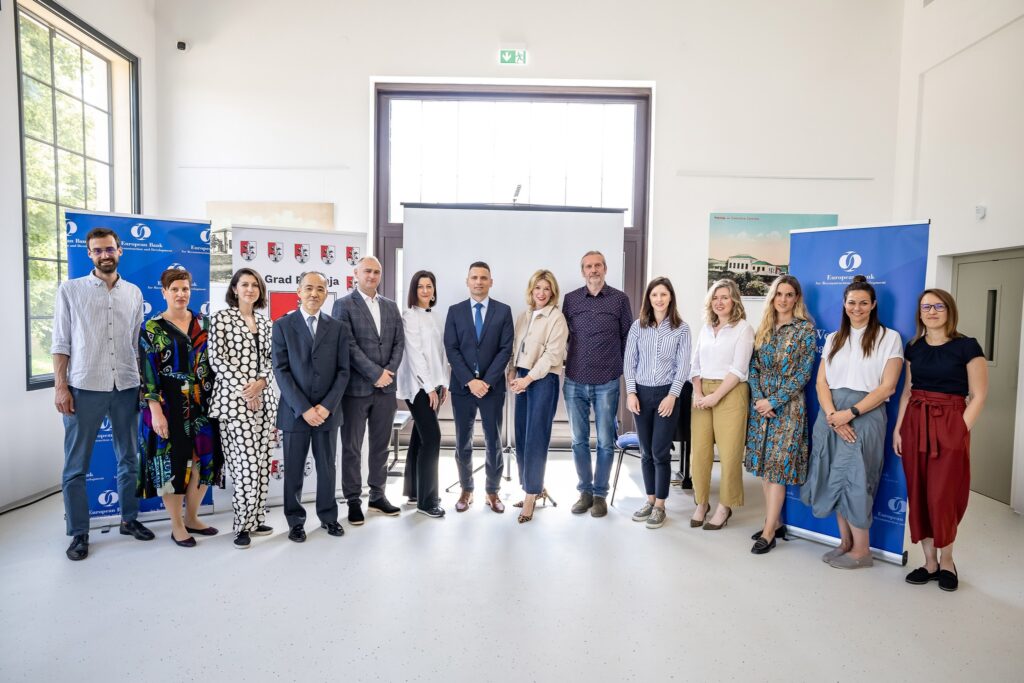
For the past 18 months, we worked with numerous partners on the project Urban Regeneration of Petrinja after the earthquake to create preconditions for the urban revitalization of the micro-location in Petrinja while encouraging the use of the best international practices for disaster risk reduction and reconstruction after the earthquake. The project is an opportunity for Petrinja to recognize and accept opportunities that could arise due to the reconstruction and recovery of the affected area, guided by the Build Back Better agenda.
The research and consulting company for urban planning Urbanex (Croatia), the architectural and design company KCAP (Switzerland/Netherlands), and the SOLIDARNA Foundation in cooperation with the Zamah Foundation are behind the project. The partner in the implementation of the project is the European Bank for Reconstruction and Development (EBRD), financed by the Japanese government through the Japan-EBRD Economic Fund (JECT). The project was developed to support the Petrinja City Administration in implementing reconstruction and rehabilitation measures after the earthquake.

The SOLIDARNA Foundation, in cooperation with the Zamah Foundation, through a series of direct activities with citizens, starting with focus groups, civic classes, and public presentations, tried to hear reflections on the needs of the community directly from citizens and members of the business, public and civil sectors. Direct activities with the community resulted in concrete proposals for the recovery of the community, improvement of the quality of life, and reconstruction of public spaces in the City of Petrinja after the earthquake. Based on the comments of the local community, urban planning, and green infrastructure experts presented an optimal scenario and an action plan for the urban renewal of the selected location in Petrinja.

The SOLIDARNA Foundation made an analysis of the key actors who were (and still are) involved in the relief, reconstruction, and recovery of the earthquake-affected area, as well as mapping the existing volunteer and philanthropic resources in the community to promote community preparedness in case of future natural disasters, as and in light of other possible challenges and/or opportunities. As part of the project, recommendations for strengthening post-earthquake resilience and guidelines for community involvement in the post-earthquake context were adopted.
This document provides guidance and recommendations on stakeholder engagement and management in times of crisis, particularly when dealing with natural disasters such as earthquakes. The goal is to support and lead the City of Petrinja in preparation for the next potential disaster, but also to become a center of expertise and disaster management.
This document provides recommendations for post-earthquake disaster risk reduction, as well as resilience-building activities, based on examples of international good practice, to guide the city of Petrinja on its way to a more resilient future. These recommendations can be transferred and adapted to suit other local communities throughout the Republic of Croatia. An integral part of the Recommendation comprises two additional attachments, available at the links below in the text, Workplace Safety and Methodical Preparation of School Lessons. Our mission is to, as civil society and community engagement consultants for this project, connect local communities, examples of international good practice, and valuable experiences to ensure Petrinja’s journey towards recovery and its future resilience.
Disasters often happen without warning and society relies on organizations, businesses, and institutions to continue working, but also to help the community recover more efficiently and quickly. It is therefore crucial to make your workplace resilient – in the context of space, inventory, and employee education on what to do in the event of a disaster. This contribution provides a summary of the booklet 7 Steps to a Disaster Resilient Workplace but focuses on the steps that need to be taken before an earthquake to be prepared and safe.
This workshop aims to familiarize students with natural disasters, in this case earthquakes, to familiarize them with measures to protect against earthquakes and how to act during and after an earthquake. Professor Zlata Paštar from Zagreb’s 1st high school wrote teaching methodical recommendations for the workshop that was held with 1st grade students.
Cover photo: Goran Jakuš